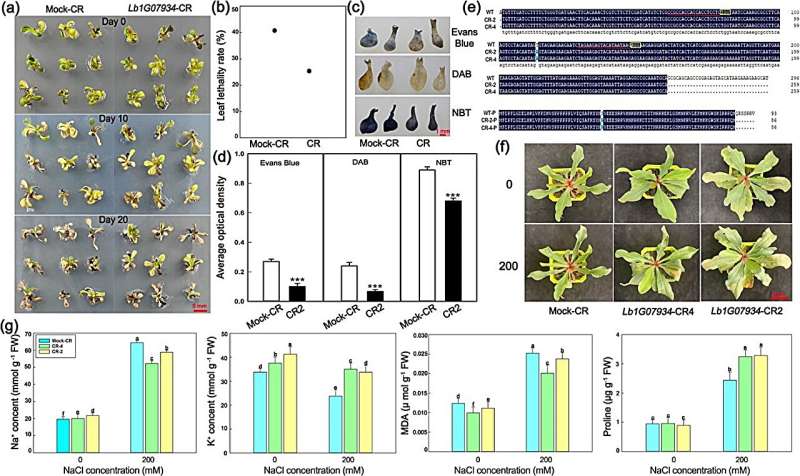
Recent research has uncovered the genetic mechanisms behind sea lavender’s (Limonium bicolor) salt tolerance by studying basic helix–loop–helix (bHLH) transcription factors. Identifying 187 bHLH genes, the study highlights their roles in salt gland development and stress responses. CRISPR-Cas9 validation demonstrated specific bHLH genes’ critical role in enhancing salt tolerance, paving the way for future applications in crop improvement and saline soil management.
Basic helix–loop–helix (bHLH) transcription factors are essential for various plant processes, including growth, development, and stress responses. Sea lavender, a recretohalophyte with unique salt glands, exhibits high salt tolerance, making it an ideal model for studying salt resistance mechanisms.
With soil salinization posing an increasing threat to global agriculture, understanding the genetic basis of salt tolerance is crucial. Given these challenges, exploring the bHLH gene family in Limonium bicolor could reveal valuable applications for enhancing crop resilience and improving saline soils.
Researchers from Shandong Normal University have made significant strides in understanding sea lavender’s salt tolerance mechanisms, publishing their findings in Horticulture Research on February 2, 2024.
The study focuses on the genome-wide identification of bHLH transcription factors in sea lavender and their role in salt gland development. By analyzing the characteristics, localization, and phylogenetic relationships of 187 bHLH genes, the researchers uncovered their significant roles in regulating plant growth and stress responses.
The study identified 187 bHLH transcription factor genes in the Limonium bicolor genome, revealing their roles in plant growth, development, and stress responses. Bioinformatics analyses highlighted conserved bHLH domains and cis-regulatory elements linked to stress tolerance and epidermal structure development. Researchers focused on nine key bHLH genes, examining their localization and expression.
CRISPR-Cas9 knockout and overexpression lines highlighted the critical role of Lb1G07934 in salt gland formation and salt resistance. Knockout lines showed enhanced salt tolerance and Na+ efflux, while overexpression lines exhibited reduced salt tolerance. These findings suggest a complex regulatory network and pave the way for future agricultural applications.
Dr. Baoshan Wang, a researcher in plant stress biology at Shandong Normal University, stated, “This study marks a significant advancement in our understanding of the genetic mechanisms behind salt tolerance in halophytes. The identification and functional analysis of bHLH genes in Limonium bicolor open new avenues for developing salt-tolerant crops, which is crucial for global food security amidst increasing soil salinization.”
This research has profound implications: integrating sea lavender’s salt tolerance into crops can enhance productivity on saline lands, boosting global food security and sustainable land use. The study’s genomic analysis and genetic modification approach also pave the way for improving crop resilience to various stress factors.
More information:
Xi Wang et al, Genome-wide identification of bHLH transcription factors and functional analysis in salt gland development of the recretohalophyte sea lavender (Limonium bicolor), Horticulture Research (2024). DOI: 10.1093/hr/uhae036
Citation:
Unlocking salt tolerance: Sea lavender’s genetic secret revealed (2024, June 5)
retrieved 6 June 2024
from https://phys.org/news/2024-06-salt-tolerance-sea-lavender-genetic.html
This document is subject to copyright. Apart from any fair dealing for the purpose of private study or research, no
part may be reproduced without the written permission. The content is provided for information purposes only.







